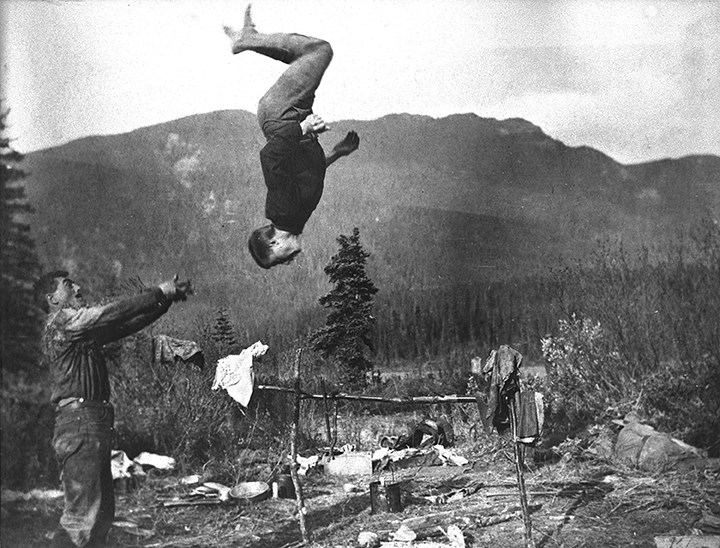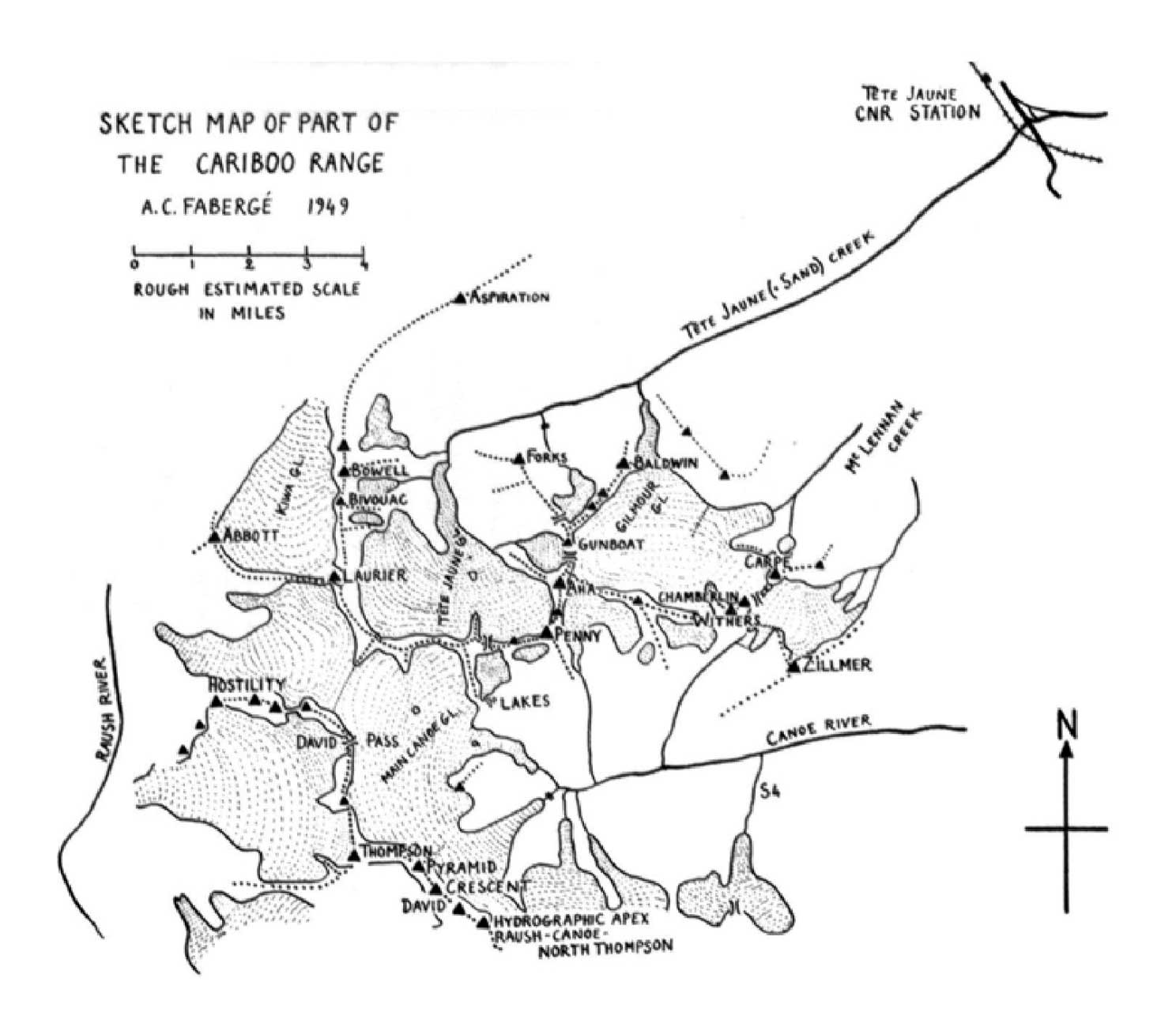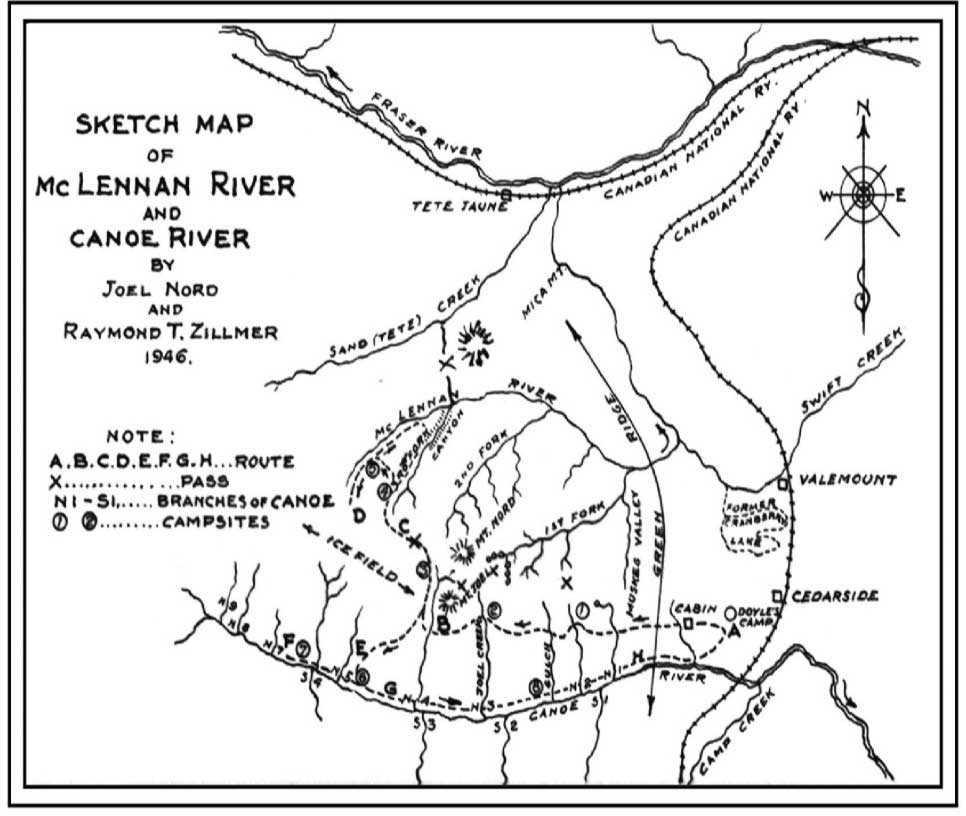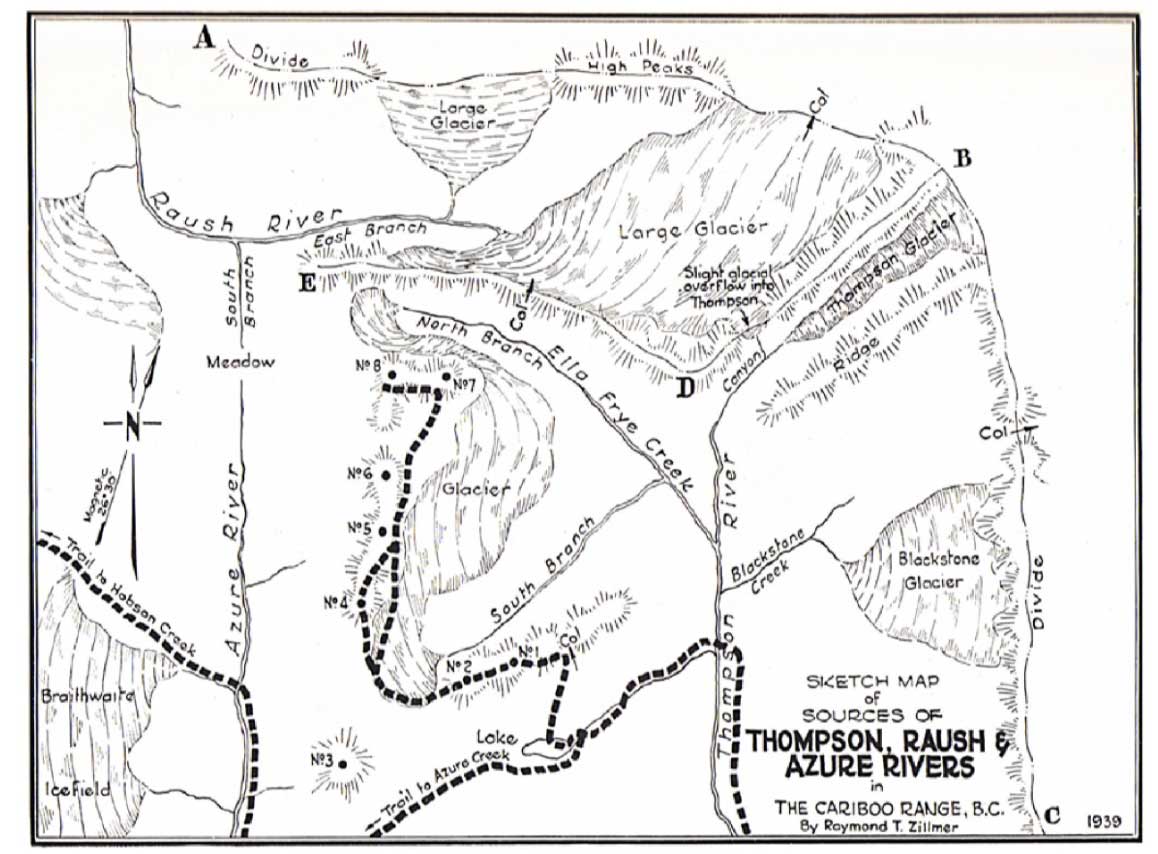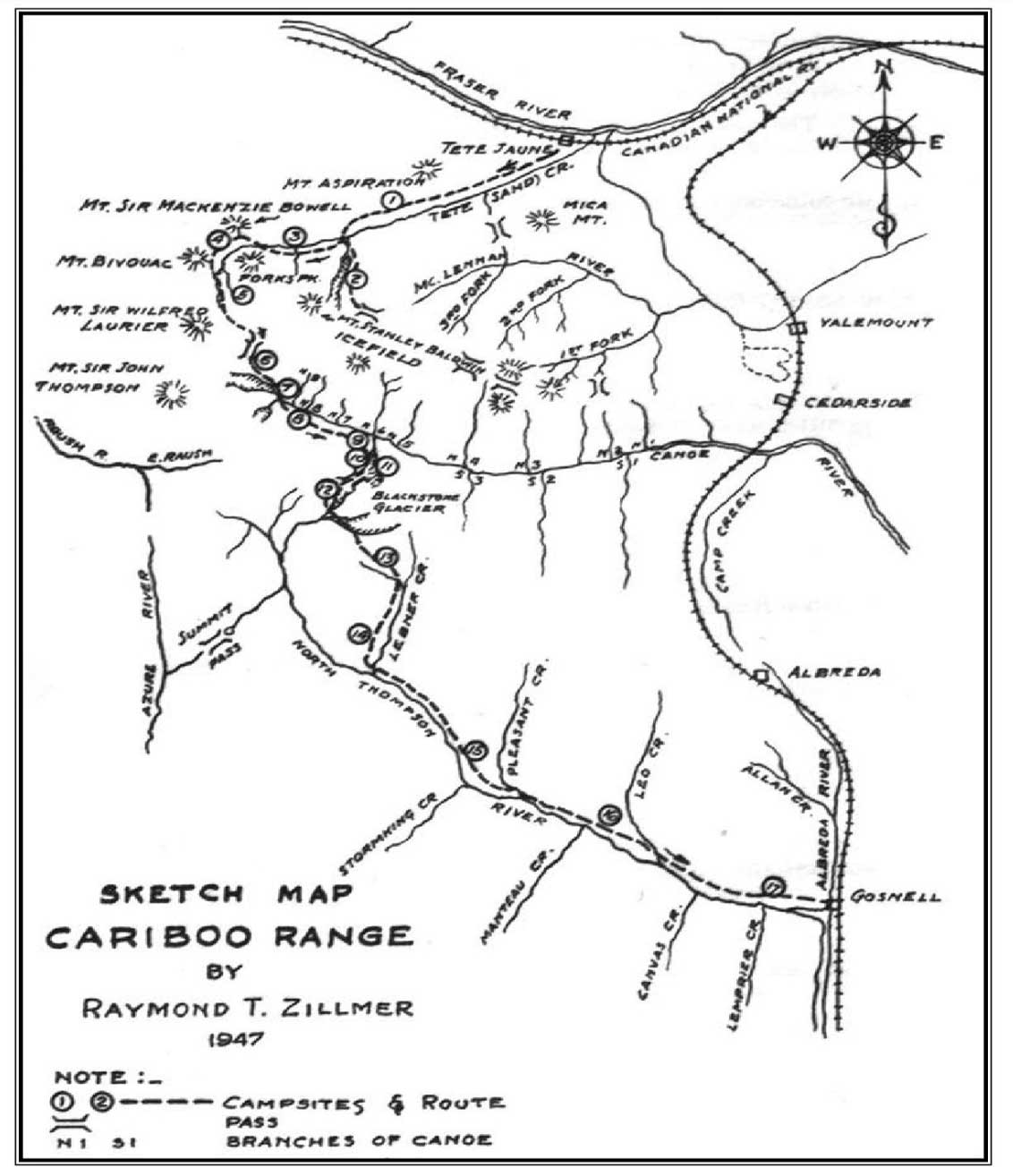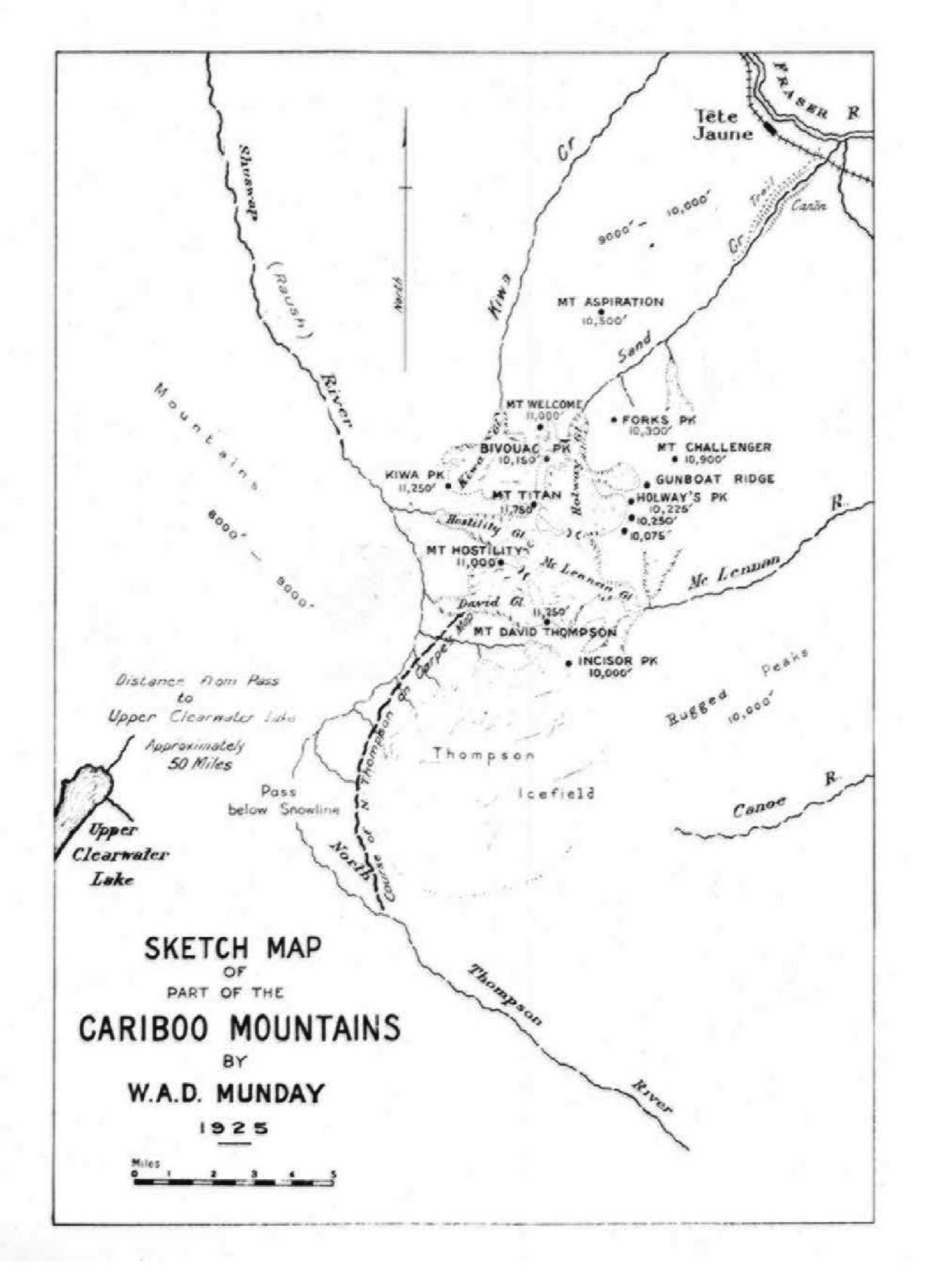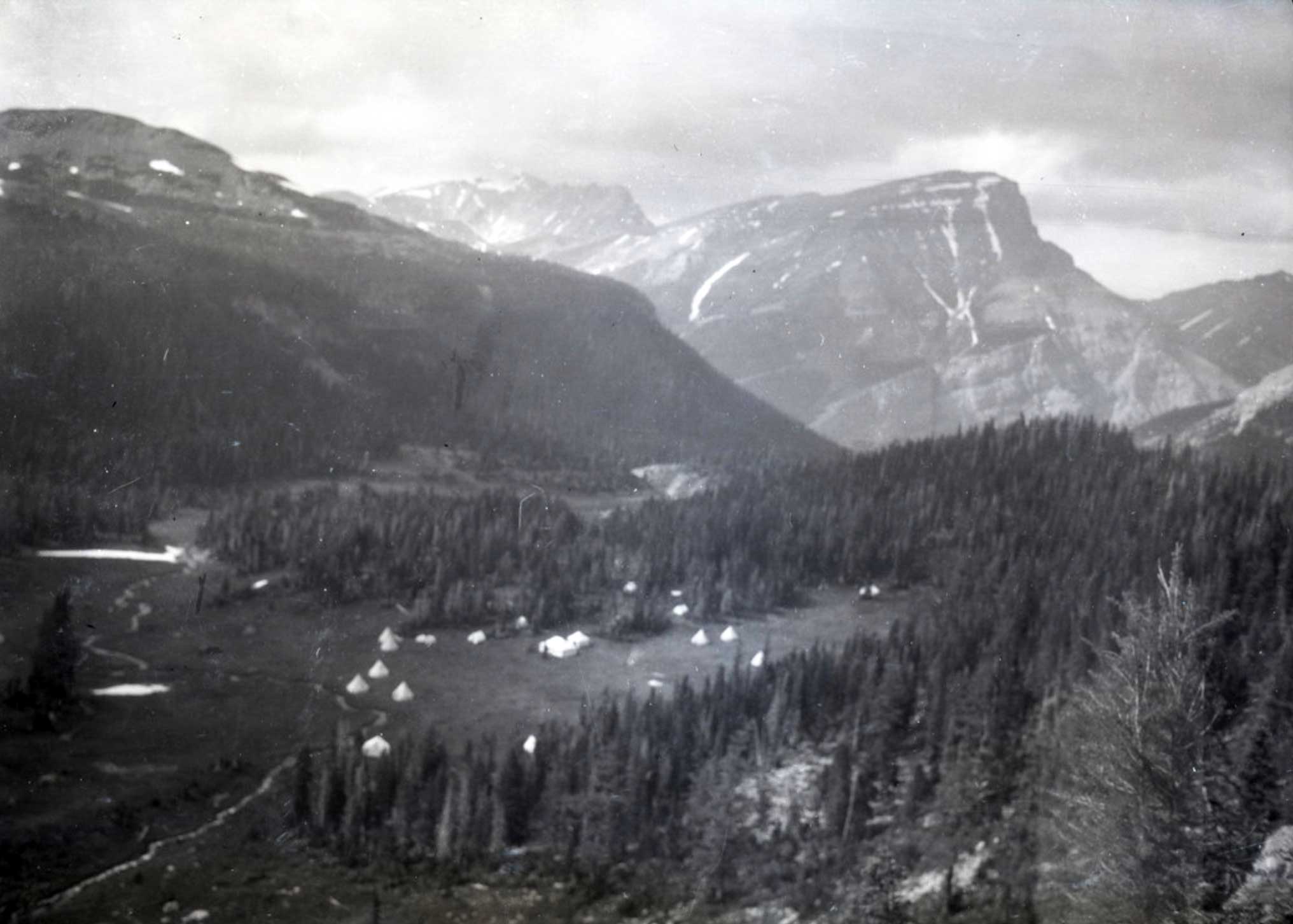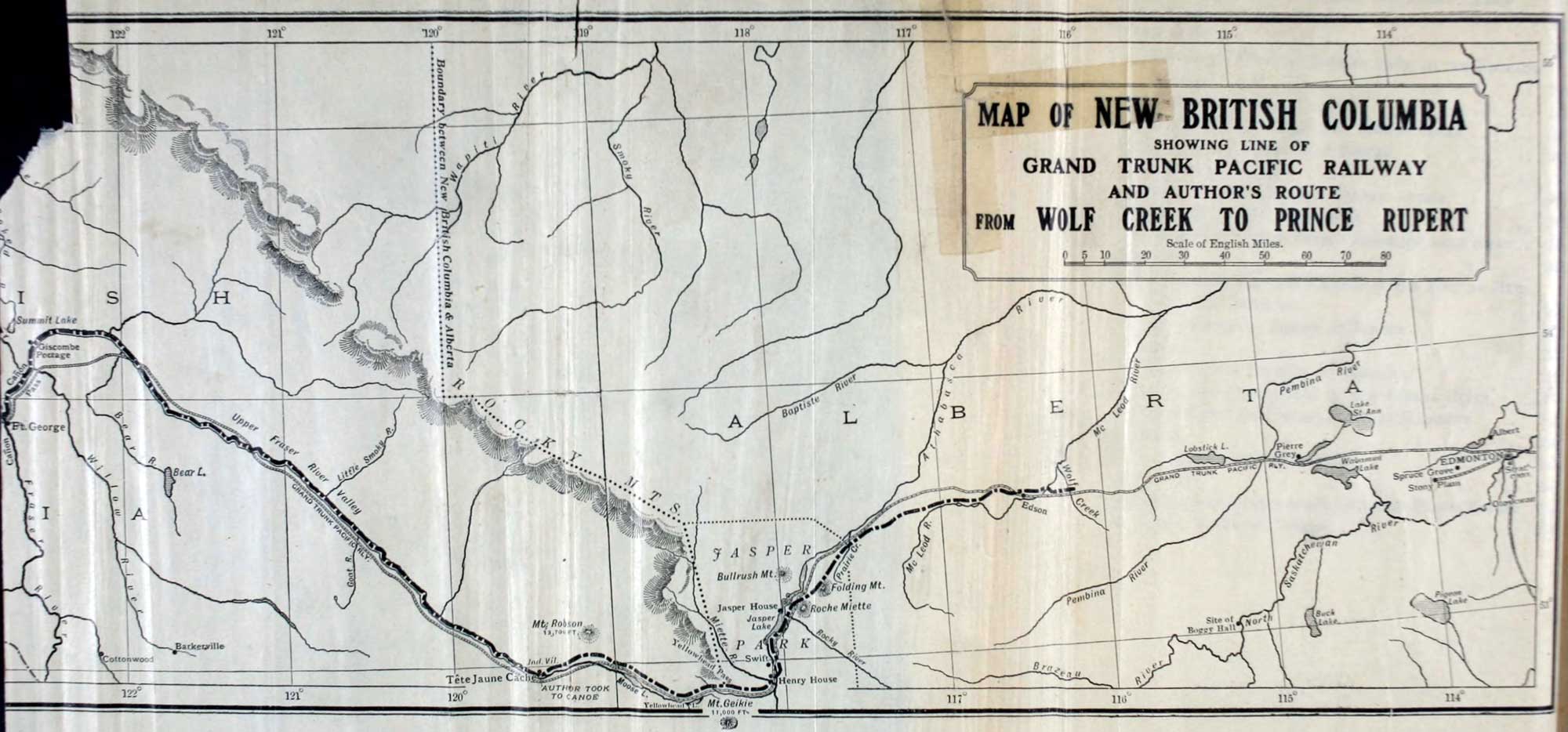
Map of New British Columbia
Showing Line of Grand Trunk Pacific Railway and Author’s Route From Wolf Creek to Prince Rupert
F. A. Talbot, New Garden of Canada, 1911 [accessed 15 February 2025]
Map of New British Columbia
Showing Line of Grand Trunk Pacific Railway
and Author’s Route From Wolf Creek to Prince Rupert
British travel author Frederick Arthur Ambrose Talbot [1880–1924] traversed the Yellowhead Pass in 1910, one year ahead of the construction of the Grand Trunk Pacific Railway. Talbot was hired by the railway to cross Canada and report the potential of the areas being opened up. Two books, published in London, resulted from the trip: New garden of Canada: By Pack-horse and Canoe through Undeveloped New British Columbia, (1911), and The Making of a Great Canadian Railway (1912). In 1924, while living in Pointe-Claire, Québec, Talbot was sent to Calgary to make arrangements for the arrival of the Prince of Wales, Edward VIII, to ceremoniously travel the complete rail line. But at 44 years old, Talbot contracted pneumonia in Calgary and died.
Frederick Talbot was not the namesake of Mount Talbot or Talbot Lake.
- Talbot, Frederick Arthur Ambrose [1880–1924]. The new garden of Canada. By pack-horse and canoe through undeveloped new British Columbia. London: Cassell, 1911. Internet Archive [accessed 15 February 2025]
- Talbot, Frederick Arthur Ambrose [1880–1924]. The making of a great Canadian railway. The story of the search for and discovery of the route, and the construction of the nearly completed Grand Trunk Pacific Railway from the Atlantic to the Pacific with some account of the hardships and stirring adventures of its constructors in unexplored country. London: Seely, 1912. Internet Archive [accessed 15 February 2025]
- Schukov, Victor. “Meet Frederick Talbot, one of Pointe-Claire’s long forgotten celebrities.” Montreal Gazette, November 17 (2014). Montreal Gazette [accessed 15 February 2025]
